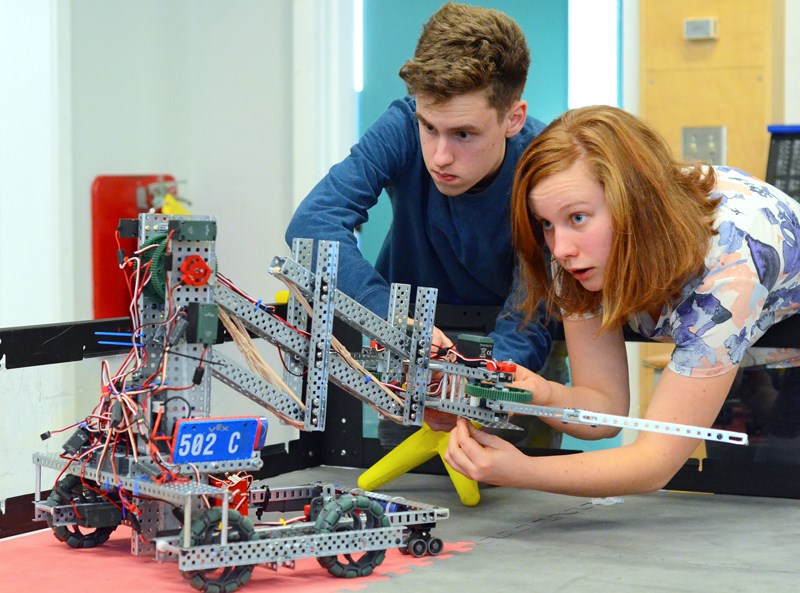Burnaby robotics students can’t seem to get enough of tinkering.
The district robotics program at Alpha Secondary School – now in its second year – is about 85 hours in total, but there’s no reining in the enthusiasm of some students.
“You have kids that will try to get in even when they’re in other classes to get in here and work on their robots,” said Russell Evanisky, who teaches the course with Alex Mckillop.
Since taking part in VEX Robotics Competitions is part of the program, the work doesn’t stop on the weekends either.
Evanisky estimates more than 300 hours of student labour will have gone into each of his school’s competition robots by the end of the year.
He said the VEX tournaments are a great motivator.
“Now (students) are feeling real pressure and real timelines,” Evanisky said. “They’re striving more for refinement, research and development, and making a far better robot every time.”
Two Grade 12 students, Dylan McLean and Patrick Reddy, hope all that effort will take them all the way to the VEX world championships in Louisville, Ky. this year.
The duo, in charge of Alpha robot 502a, has already captured the Judges Choice Award at the season opener at Alpha on Oct. 15 and the South Island Design Award at Shawnigan Lake Nov. 19.
They were eliminated in the quarter final of the most recent competition at Gladstone Secondary on Dec. 10 but have already qualified for the provincial championships at Seaquam Secondary and made it into the A class of the season finale at BCIT in the spring.
To qualify for worlds, McLean and Reddy will have to make it to the finals of the tournament, win the skills competition or win a design award.
McLean, who captains the team, said he doesn’t ever get tired of tinkering with 502a, even after working on it in every robotics class, at home after school and on the weekends at tournaments.
“That’s what you have to do,” he said. “You have to always be updating it and making it better to be at the top.”
Each VEX tournament sees competitors put their robots through the paces, stacking and pushing plastic cubes and cones for points, but the events also feature detailed presentations on the robots, including design documents, blueprints and 3D models.
“It’s essentially built around the STEM approach, science, technology, engineering and math, and they add physics in there,” Evanisky said. “So realistically it’s an engineering robotics competition.”
McLean admits he’d “definitely” never have learned as much programming as he has if there weren’t a hardware component to the program.



